The Dramatic Surge of Cryptocurrency Theft in 2024 with North Korea at the Helm
In Brief
In 2024, North Korean cybercriminals made off with a staggering $2.2 billion in cryptocurrency, presenting a serious threat to the safety of the global financial landscape and the digital currency sphere.

The cryptocurrency sector faced a pivotal moment in 2024, as hackers exploited vulnerabilities to abscond with digital assets worth $2.2 billion. Notably, North Korean hackers were the most successful, responsible for $1.3 billion of the total theft. This alarming trend underscores a growing peril to both the crypto world and international security, particularly as stolen assets linked to North Korean entities surged by an astounding 102.88% from 2023. according to Chainalysis The Rising Phenomenon of Digital Theft
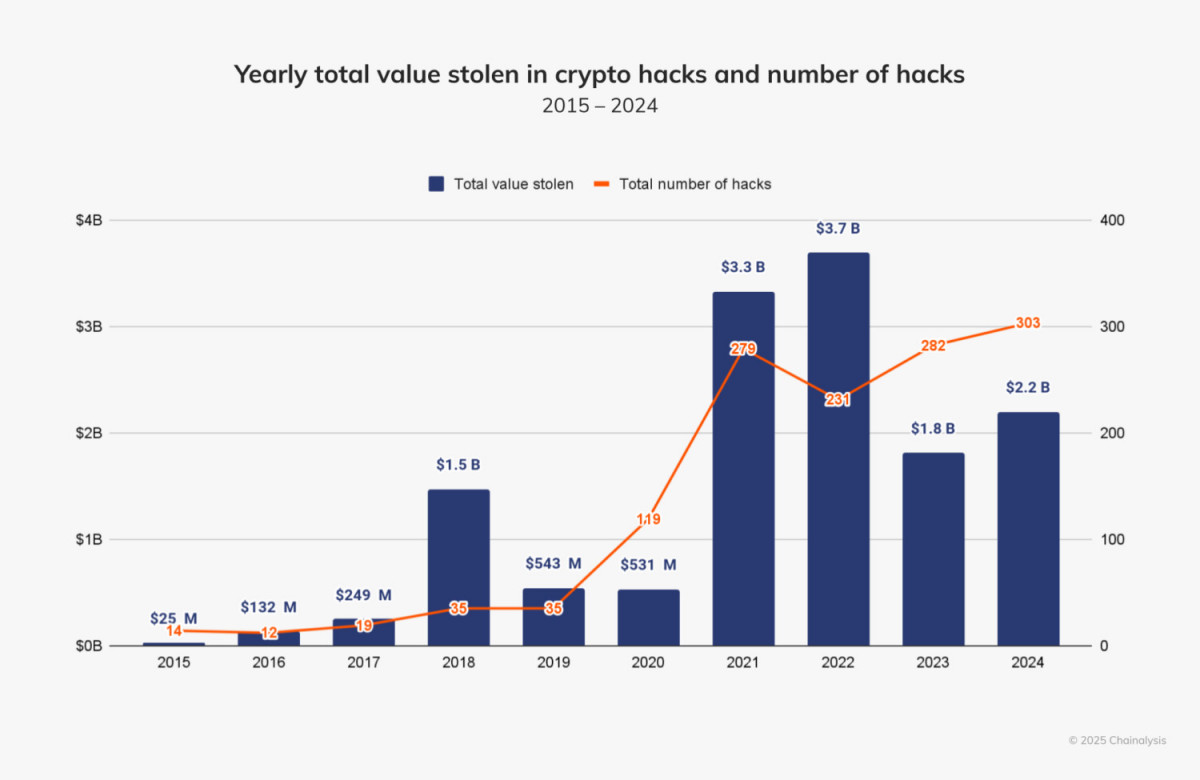
Photo: Chainalysis
The crypto arena has always grappled with thefts, with certain years marked by unprecedented amounts of stolen funds. The total crypto theft in 2024 surged by over 21% compared to the previous year, fueled by an escalation in hacking incidents. The number of reported breaches climbed from 282 in 2023 to 303, highlighting the sector's ongoing susceptibility.
In the first half of 2024, hacking behavior shifted significantly. Crypto thefts reached $1.58 billion from January to July, reflecting an 84.4% increase compared to the same timeframe in the previous year. Initially, there were hopes that 2024 would mirror the record theft years of 2021 and 2022, when over $3 billion was stolen each year. However, as the months progressed, instances of hacking dramatically declined, suggesting external factors may be at play.
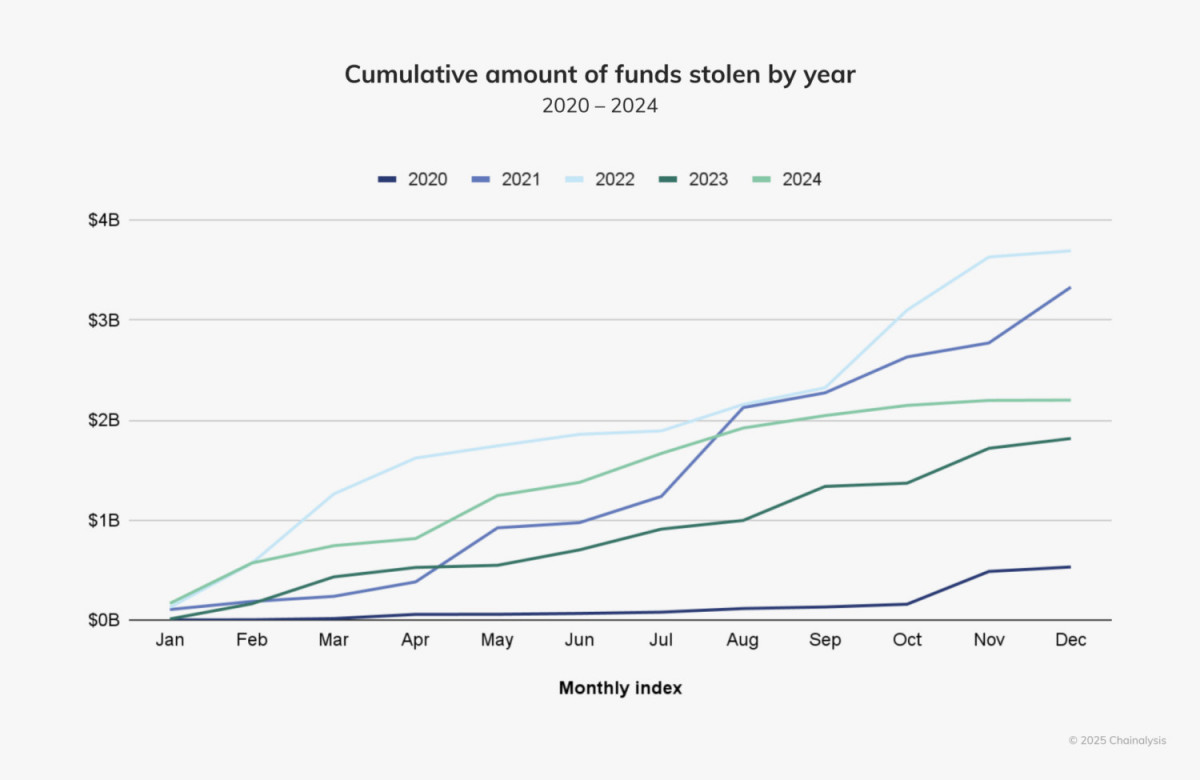
Photo: Chainalysis
Shifts in Focus: Centralized Networks vs. DeFi
Traditionally, hackers have favored decentralized finance (DeFi) networks due to their rapid innovation and often fragile security frameworks. In early 2024, most of the stolen funds were linked to DeFi platforms. However, a noticeable shift occurred in the latter half of the year, as centralized platforms became the primary targets of cyberattacks.
This trend is illustrated by two significant breaches: the $234.9 million theft from WazirX in July and the $305 million attack on DMM Bitcoin in May. These incidents underline the vulnerabilities within centralized services, particularly regarding private key management. In 2024, compromises of private keys emerged as the leading attack method, causing 43.8% of all crypto thefts.
Private keys are crucial for securing users’ funds, granting access to their assets. The DMM Bitcoin incident highlights the potential catastrophic consequences of any security breach. Beyond the immediate financial losses, the exchange's inability to protect its private keys ultimately led to its shutdown later that year.

Photo: Chainalysis
North Korea as a Central Figure in Cryptocurrency Theft
The alarming trend of cryptocurrency theft is increasingly associated with North Korean hackers. In 2024, they emerged as the dominant force in this arena, accounting for 61% of all funds stolen. The $1.3 billion taken in 47 hacking incidents marked a significant leap from the $660.5 million acquired through 20 hacks the previous year. This spike illustrates Pyongyang’s reliance on cryptocurrency theft as a means to finance its weapons programs and circumvent international sanctions.
North Korean cybercriminals have refined their tactics, executing larger-scale operations more frequently in 2024 and often targeting amounts exceeding $50 million—more than in previous years. They also expanded their operations to include smaller hacks, seeking sums as modest as $10,000.
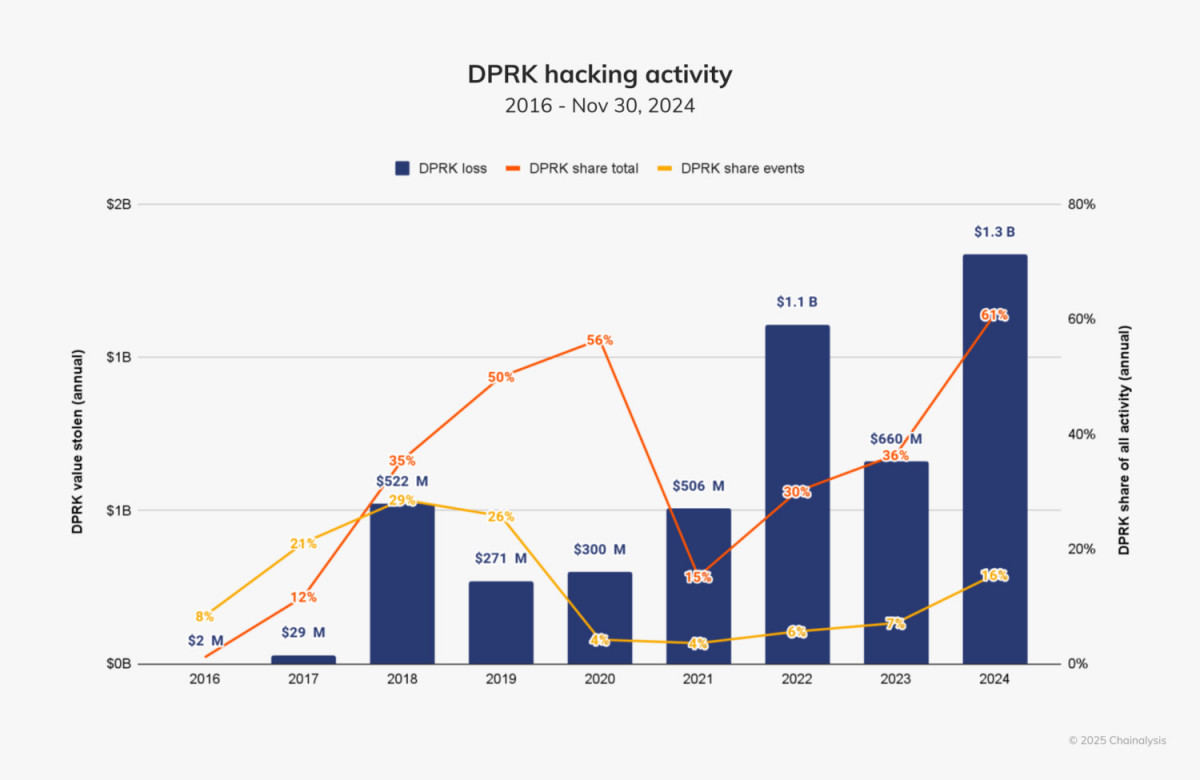
Photo: Chainalysis
Cyber Espionage and Workforce Infiltration
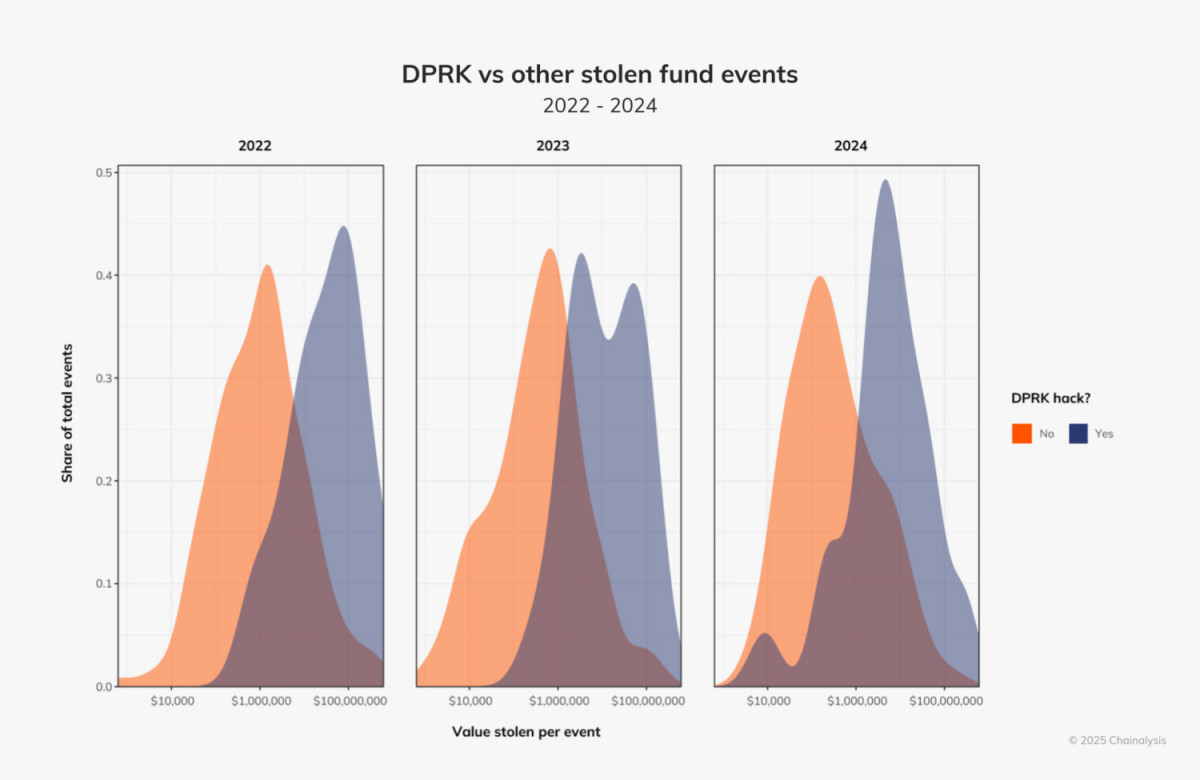
Photo: Chainalysis
A growing worry is the infiltration of crypto firms by North Korean IT experts. These agents use fake identities, third-party intermediaries, and remote job offers to access vital networks. One notable case involved 14 North Korean individuals being charged with stealing $88 million through such techniques. This underscores the need for robust employee vetting and rigorous cybersecurity measures.
In the first half of 2024, North Korean cyber activities surged dramatically, only to see a considerable reduction after July. This drop coincided with a geopolitical event—a summit between North Korean leader Kim Jong Un and Russian President Vladimir Putin. Following this meeting, North Korea's hacking operations appeared to shift, evidenced by a 53.73% decline in the daily value of stolen funds. Conversely, non-North Korean hacking activities saw a moderate increase during the same period.
The reasons behind this decline remain uncertain. It's possible that North Korea redirected resources to support its military partnership with Russia, which has involved sending ballistic missiles and personnel to Ukraine. Alternatively, this could be indicative of a strategic pivot in Pyongyang's cyber operations.
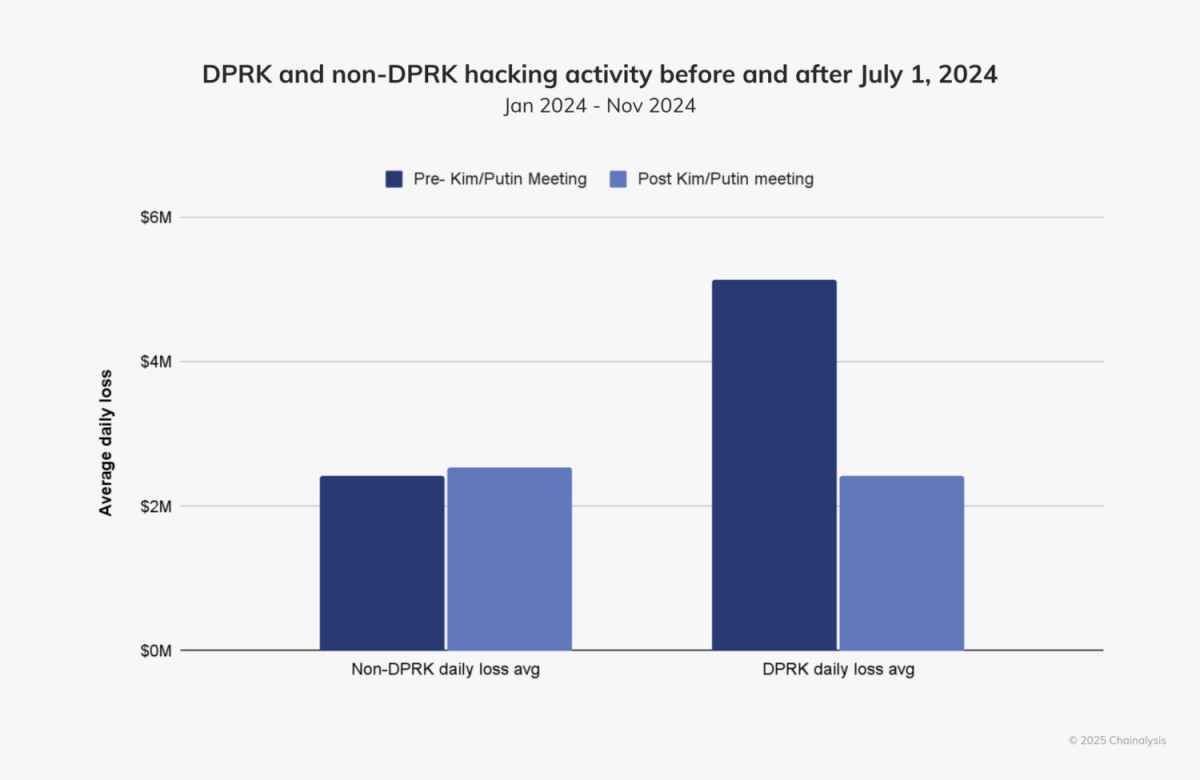
Photo: Chainalysis
One of the most significant incidents of 2024 was the $305 million breach at DMM Bitcoin. North Korean hackers extracted 4,502.9 Bitcoin by exploiting weaknesses in the exchange's system to obtain private keys illicitly. After being laundered through mixing services, the stolen cryptocurrency was later transferred to platforms linked with the Huione Group, a known cybercrime organization based in Cambodia.
The DMM Bitcoin Breach Case Study
This breach carries substantial implications. DMM Bitcoin suspended its operations and transferred assets to SBI VC Trade, aiming to complete a transformation by 2025. This incident serves as a reminder of the urgent need for proactive security measures against such attacks and the dire consequences stemming from inadequate safeguards.
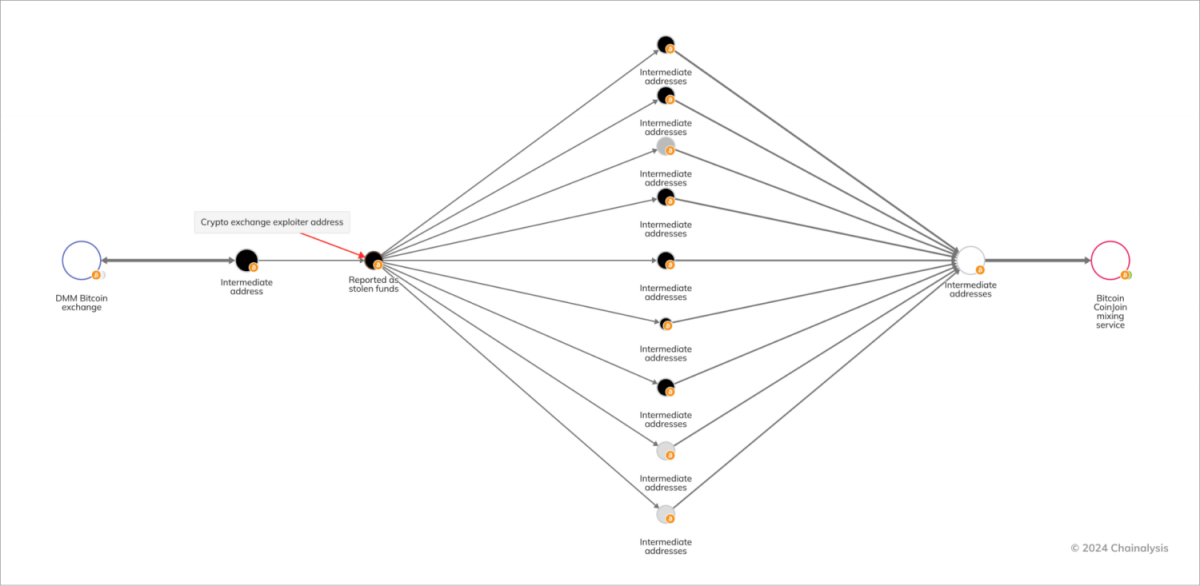
Photo: Chainalysis
The Future of Cryptocurrency Security: Predictive Models
Advancements in predictive technology offer hope in combating cryptocurrency theft. A notable development is Chainalysis's acquisition of Hexagate, a Web3 security firm, marking a significant step toward the proactive identification of threats. Hexagate employs machine learning algorithms to analyze real-time blockchain activities, flagging suspicious patterns and potential attacks before they occur.
For instance, just two days prior to an assault, Hexagate identified a contract related to a $20 million vulnerability at UwU Lend. While the link to the eventual attack wasn't immediately clear, this early detection demonstrates the potential of such technologies to avert financial disasters.
Nevertheless, the effectiveness of predictive models hinges on their integration into existing security frameworks. To thwart potential risks before they escalate, protocols must be equipped with the necessary tools to respond promptly to early warnings.
The surge of cryptocurrency theft in 2024 accentuates the immediate need for enhanced security measures. Addressing the evolving threat landscape calls for a coordinated approach involving regulators, law enforcement, and industry stakeholders. A comprehensive security strategy should incorporate robust private key management, advanced tracing capabilities, and real-time surveillance.
It is important to clarify that the information on this page does not constitute legal, tax, investment, financial, or any other type of advice. Always invest what you can afford to lose and seek independent financial counsel if uncertain. For further details, please refer to the terms and conditions as well as the help and support pages provided by the issuer or advertiser. MetaversePost is dedicated to delivering accurate and unbiased news coverage, although market conditions may fluctuate without prior notice.
Disclaimer
In line with the Trust Project guidelines Victoria writes on a wide range of technology subjects, including Web3.0, AI, and cryptocurrencies. Her extensive experience enables her to craft insightful pieces for a diverse readership.







